Evolution regularity of the Neogene shallow water delta in the Laibei area, Bohai Bay Basin, northern China
Jian-Ping Li, Hao Liu , Cheng-Min Niu, Rui-Bo Guo
1. Exploration & Exploitation Research Institute, Tianjin Branch of China National Offshore Oil Corporation, Tianjin 300452,China
2. School of Ocean Sciences, China University of Geosciences (Beijing), Beijing 100083, China
3. Petroleum Engineering College, China University of Petroleum (East China), Qingdao 266580, China
Abstract According to the characteristics of sedimentary microfacies, unique vertical depositional sequences and well logging response, the authors propose that a shallow water delta was widely developed in the Neogene of the Laibei area, Bohai Bay Basin of northern China. Based on seismic minimum amplitude slices, well logging data, test analytical data and so forth, detailed research on the evolution of the shallow water delta of the Neogene Lower Member of Minghuazhen Formation was conducted. The results indicate that the third-order sequence base level controls sandbody types. During a period of low base level, a distributary channel sandbody of shallow water deltaic plain was developed. With base level rising,the sandbody type gradually changed into a subaqueous distributary channel sandbody and a sheet sand can be found as well. The fourth-order sequence base level controls mediumshort term evolution of the sandbody. Within a sequence, due to the rising and falling of base level, the sandbody assemblages are identified as an upward-coarsening type, an upwardfining and a compound type respectively. Regionally, from the Laibei Low Uplift to the Huanghekou Sag, the shallow water delta evoluted from a dendritic shape, to a cuspate shape and finally to a sheet shape.
Key words shallow water delta, evolution, Lower Member of the Minghuazhen Formation, Neogene, Laibei area, Huanghekou Sag, Bohai Bay Basin
1 Introduction *
In 1961, Fisk first put forward the concept of a shallow water delta, which has been constantly applied and summarized since then (Donaldson, 1974; Coleman,1988; Postma, 1990). Shallow water deltas are defined as a delta (≤6 m) formed in a lake with gentle topography and low-energy after a river flows into shore-shallow lacustrine regions; the shallow water delta emerges above the surface periodically due to frequent fluctuations in lake level. The depositional environment of a shallow water delta is dominated by weak reduction-oxidation. Many scholars carried out detailed research about the formation mechanism and depositional systems of shallow water deltas (Lemons and Chan, 1999; Plint, 2000; Hoy and Ridgway, 2003; Ganil and Bhattacharya, 2007; Keumsuk et al., 2007) since obvious differences lie between shallow water deltas and the traditional Gilbert-type delta. In recent years, shallow water deltas were identified in many lacustrine basins in China, such as the Songliao Basin, Bohai Bay Basin, Ordos Basin, Sichuan Basin and in modern Poyanghu Lake as well. Many experts revealed the depositional characteristics, depositional models, depositional dynamics and the impact on hydrocarbon accumulations of shallow water deltas (Lv et al., 1999; Han et al., 2000;Wu et al., 2004; Dai et al., 2007; Zhu et al., 2008; Liu et al., 2009; Zhang et al., 2010). However, relatively less research has been carried out regarding the evolution regularity of shallow water delta.
A shallow water delta was identified in the Neogene of the Bohai Bay Basin. Compared to the Songliao Basin and other basins in China, the lake level is much shallower (6-9 m). Meanwhile, it is characterized by gentle,stable and slow subsidence and wide lake space (Dai et al., 2007; Zhu et al., 2008). Characteristics of the shallow water delta in the Bohai Bay Basin agree well with the concept defined by researchers outside China. Studies on shallow water delta of the Neogene of the Bohai area are significant as well. The Laibei area, located in the southern Bohai Sea, includes areas between the eastern area of the Huanghekou Sag and the western sag of the Laizhouwan Depression. The shallow water delta was widely developed during the deposition of the Lower Member of Minghuazhen Formation. Research concerning the sandbody evolution regularity of the shallow water delta play an important and practical role in exploration and development of hydrocarbon reservoirs in the Lower Member of the Minghuanzhen Formation.
This paper aims at establishing the relationship between sequence architecture and the shallow water delta through analysis of sedimentary facies of the Lower Member of the Minghuazhen Formation and geophysical information.Discussion will also focus on reservoir characteristics of the shallow water delta during different depositional periods as well.
2 Data and methods
The basic data include high resolution 3-D seismic data and data of 40 drill wells. The 3-D seismic data cover an area of 800 km2, with a sampling interval of 25×25 km.The main frequency of the shallow layer is 35-40 HZ and seismic data are of higher resolution. Drill well data include well logging data of gamma radiation, resistivity and acoustic waves. Ten of these wells have core samples, palaeontological data and geochemistry analysis data of the Minghuazhen Formation.
We combined 3-D seismic and drill well data in sedimentary facies analyses. The well logging data and core data provide a detailed foundation for sedimentary facies analysis of an individual well. 3-D seismic slices (such as minimum amplitude slices) provide a guarantee for analysis of the planar distribution of sedimentary facies.
Division of sequence stratigraphy was based on previous research (Zhu et al., 2008; Lai et al., 2009). This study mainly verifies the relationships between base level cycle change within different order sequences and distribution of sedimentary faicies and the spatial distribution of reservoir sandbodies.
3 Geological setting
The Laibei area, located in the southern Bohai Bay Basin, lies between the Huanghekou Sag and the Laibei Low Uplift. To the southwest is the Kendong-Qingdongzi Uplift and to the east is the Miaoxi Depression. It is bounded by the Tanlu Strike-Slip Fault in the KL3-2 structure, the northern and southern boundary fault in the Laibei Low Uplift and the strike-slip fault are located to the east of BZ36-3 structure (Figure 1). It covers an area of approximate 1000 km2.
In ascending order, the Pre-Cenozoic (Jurassic and Cretaceous), the Paleogene Kongdian, Shahejie and Dongying Formations, the Neogene Guantao and Minghuazhen Formations, and the Quaternary Pingyuan Formation developed in the Laibei area. The Paleogene was characterized by lacustrine deposits. An unconformity occurred between the Paleogene and the Neogene (Figure 2). This study emphasizes the lower member of the Minghuazhen Formation, which was widely distributed in the study area and was dominated by sandstone, sandy conglomerate, and conglomerate interbedded with mudstone (Figure 3).
Previous studies of the Neogene deposits indicate that fluvial and lacustrine deposits were well developed during the Miocene around the Bohai Bay Basin (Xu et al., 2002;Dai et al., 2007; Zhu et al., 2008; Lai et al., 2009). Especially in the western part of the basin, numerous rivers that carried large amounts of clastic material flowed into the basin. The Neogene lake differed from the Paleogene lake. The development of the Neogene lake was controlled primarily by sag-controlled faulting that resulted in the development of a rift basin dominated by semi-lacustrine to deep lacustrine deposits. In contrast, the Neogene lacustrine basin developed during a depressional stage and was filled by peneplain during the depositional period of the Guantao Formation. During the depositional period of the Minghuazhen Formation, the basin entered into a depressional-withering period (Figure 2). The bottom of the basin was very gentle, dominated by shallow water lacustrine deposits, and developed a multi-stage shallow water delta.

Figure 1 The location and tectonic units of the study area.
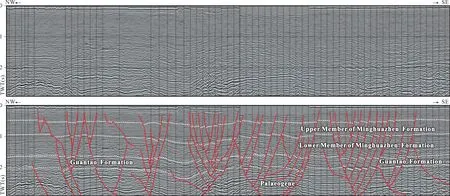
Figure 2 Schematic structure profiles across the Laibei area, Bohai Bay Basin (Location of the profile was shown in Figure 1).
4 Characteristics of the shallow water delta
The Bohai Bay Basin entered its late rift stage with regional downwarping during the Neogene. The differential elevation and subsidence nearly ended in the basin (Hu et al., 1999). During the depositional period of the Lower Member of the Minghuazhen Formation in the Laibei area,the whole basin subsided and topography was very gentle.The depositional environment was dominated by shallow lacustrine facies (Figure 4). Due to frequent fluctuations of lake level, a shallow water delta was developed in the region where rivers flowed into the lake.
4.1 Sedimentary structures

Figure 3 Lithostratigraphy, climate cycle and sequence subdivision of the Lower Member of Minghuazhen Formation in Laibei area. Two third-order cycles are identified in the Lower Member of the Minghuazhen Formation, which correspond to 2 third-order sequences and 5 fourth-order sequences.
The main types of depositional structures identified from core samples included clumpy bedding, wavy bedding, cross-bedding and tabular bedding, erosional surfaces, and so forth (Figure 5). Under stronger hydrodynamic conditions, clumpy bedding, erosional surfaces and large-medium-scale cross-bedding were formed in distributary channel deposits, under stable or weaker hydrodynamic conditions, wavy bedding, small-scale cross-bedding and ripple cross-bedding developed in the distributary channel, crevasse splay and sheet sand deposits.
4.2 Sedimentary microfacies
According to observation and analysis of core data(Figure 6), the shallow water delta in the study area was subdivided into three subfacies, namely shallow water deltaic plain, shallow water deltaic front and shallow water prodelta. Further subdivision, identified the main microfacies as distributary channel (or subaqueous distributary channel), inter-distribuary bay (or subaqueous inter-distributary bay), crevasse splay, sheet sand, mouth bar, shallow lacustrine mud flat, shallow lacustrine sand flat and so on.
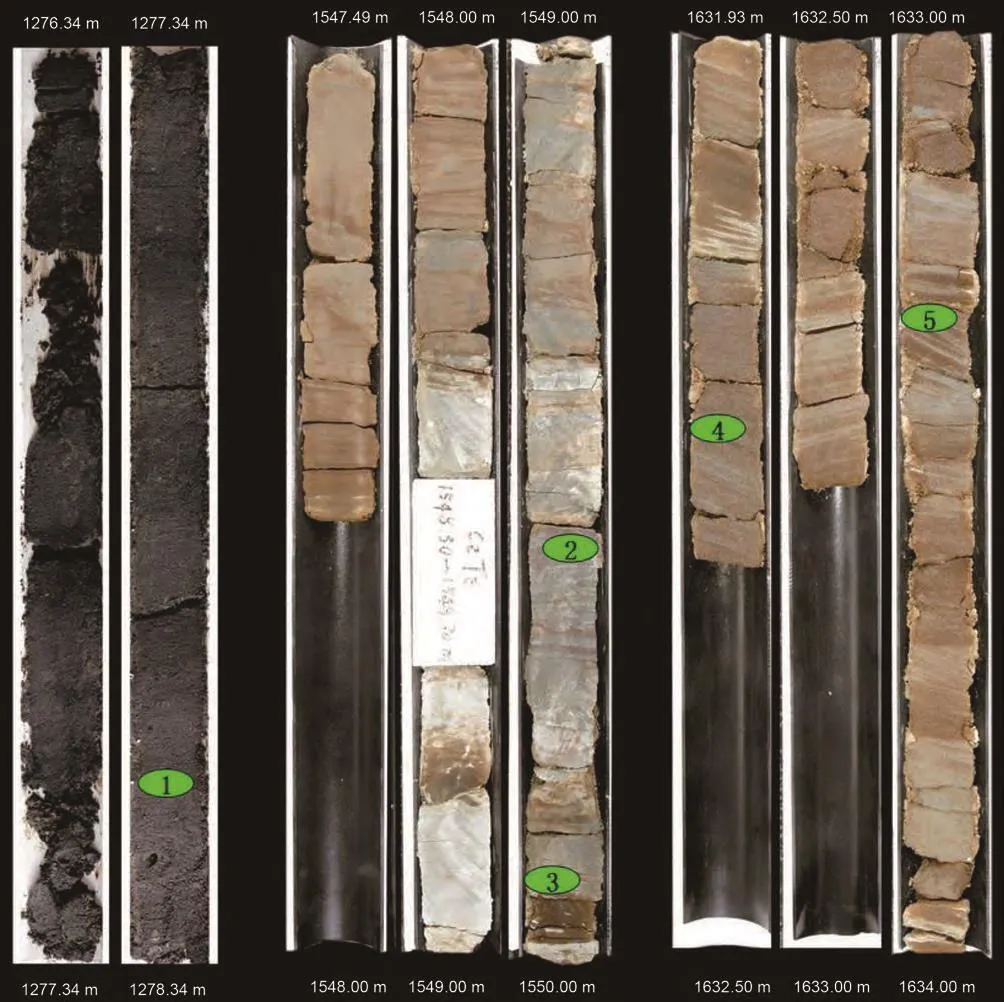
Figure 5 Main sedimentary structure types of the shallow water delta in the Laibei area (from Well KL3-2-2). 1-Clumpy bedding;2-Massive bedding; 3-Gravel and erosional surface; 4-Oblique bedding; 5-Cross-bedding.
The distributary channel was dominated by medium and fine-grained sandstone with sedimentary structures of clumpy bedding, medium-scaled trough cross-bedding,tabular cross-bedding etc. Mud content increased in subaqueous distributary channel deposits and sorting of the deposit became poorer. Fine-granined sandstone and siltstone were dominant in the crevasse splay with sedimentary structures of small-scale cross-bedding and wavy bedding. The mouth bar was not well developed here,and was mainly comprised of fine-grained sandstone and siltstone. The mud content of the mouth bar was much higher, whereas its thickness was thinner. The sheet sand formed two types of genetic units; one was a distal sheet sand consisting of wavy and flaser bedded siltstone interbedded with grey black mudstone and the other one was a proximal sheet sand containing wavy cross-bedding sandstone interbedded with gray greenish mudstone. Overall,it is hard to distinguish prodelta from shallow lacustrine deposits. Semi-deep-deep lacustrine deposits were not developed due to the extremely shallow lake level. Muddy deposits of the shore-shallow lacustrine facies were identified as well, along with shallow water deltaic front facies,which were usually mixed together. On the basis of lithology association type and genetic characteristics, shoreshallow lacustrine facies can be subdivided into shallow lacustrine mud flat and sand flat.
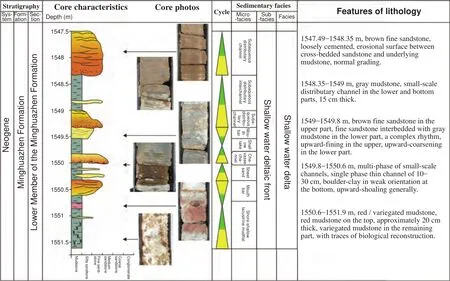
Figure 6 Sedimentary sequence of shallow water delta in Laibei area of Bohai Bay Basin (from Well KL3-2-2).
Other than normal delta features, the shallow water delta in this area also showed obvious aggraded characters.Frequently superimposed sand layers can be indentified in an individual well (Figure 6). Within a typical depositional sequence, the bottom was dominated by shore-shallow lacustrine deposits that the distributary channel (or subaqueous channel) directly covered; While mouth bar of shallow water deltaic front developed locally, leading to a poor continuity of vertical depositional sequence.
4.3 Logging response
Logging response of delta deposits is commonly a reverse cycle assemblage with fl at-, funnel-, box-, bell- or tooth- shaped geometry (Han et al., 2009). This regional logging response of the shallow water delta refl ects funnel-shaped mouth bar that is often less developed. Due to the thin nature of mouth bar deposits, its logging curve is characterized by tooth- or compound-shaped geometry(Figure 7).
5 Sandbody evolution of the shallow water delta
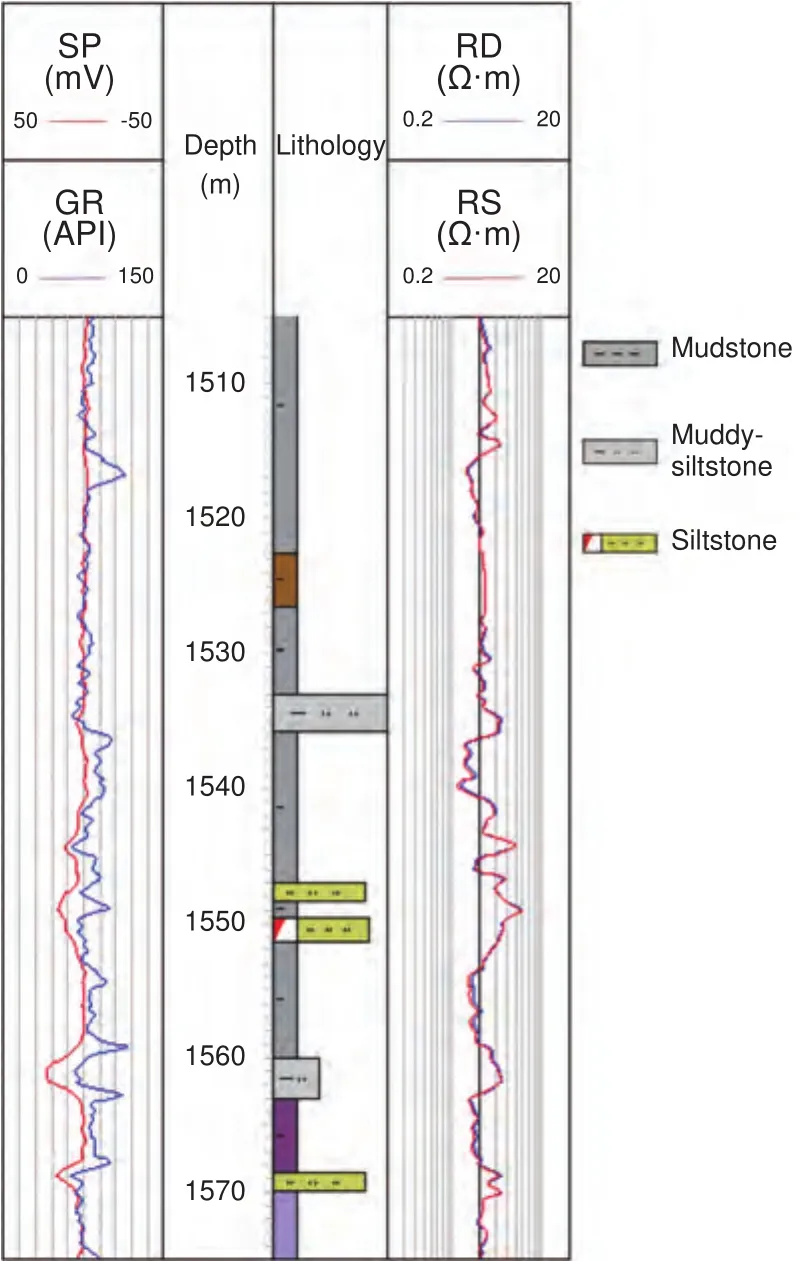
Figure 7 Characteristics of the logging curve of the shallow water delta (from Well BZ34-7-1).
Drill wells are relatively fewer but concentrated in this area, thus these well data do not match research requirement. Based on high resolution 3-D seismic data and combined with regional well logging and test data, techniques of seismic amplitude slices (Zeng and Hentz, 2004; Zhu et al., 2009; Liu et al., 2012) and automatic identification of sandbodies manually are used for sandbody description. Through comprehensive analyses and correlation of various seismic attributes, maximum amplitude attributes reflect well the characteristics of the reservoir sandbody.Sedimentary facies analysis indicates that the dristributary channel developed along with the interbedded inter-distributary bay deposit.
5.1 Planar characteristics of the shallow water delta sandbody
Figures 8 to 10 are seismic amplitude attribute slices that reveal the typical characteristics of sandbodies of the shallow water delta and shallow lacustrine facies.
From northern Laizhouwan to the southern Laibei Low Uplift, channel sandbodies are not well developed near the boundary fault of northern Laizhouwan (Figure 8). The lateral amplitude of channels is relatively low, thus they spread far towards the Huanghekou Sag. A few channel sandbodies are embedded in mud deposits of widespread floodplain facies in most parts of the study area. In the central area, one river went through both sides of the fault,which indicates that in that period topography was very gentle and the Laizhouwan Depression was filled up. The deposits are from fluvial-deltaic plain facies.
In the fault terrace of the northern Laibei Low Uplift,channel sandbody is dominated by a strip shape, with obvious bifurcation (Figure 9). This is primarily influenced by short-term base level. The frequent and wide fluctuation of lake-level led to the unstable deposition of the channel sandbody. Then the channels burst and bifurcated. From the boundary fault of the southern Laibei Low Uplift to the fault terraces, channel sandboby increased sharply and its proportion in planar distribution increased as well. Just for a single channel sandbody, the low sinuosity gradually changed into medium-high sinuosity. At the same stage,the channel sandbody incised and superimposed with each other, and thus led to the current planar distribution characteristic of reticular-shaped sandbody.
Near the Huanghekou Sag in the northern study area, the shape of the channel sandbody changed a lot (Figure 10),thus it is hard to distinguish channel sandbodies. Instead,flower-shaped distributary sand bars of the delta were widely developed. Meanwhile, they were somewhat different from adjacent sandbodies. We inferred that the sandbody was located in the core and compound parts of the distributary sand bar; while the thinner part was a channel deposit between bars and the mud-rich part belonged to the bar edge.
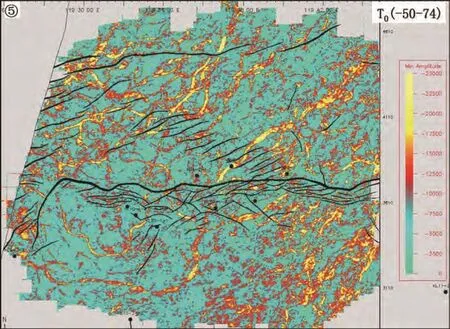
Figure 8 Planar distribution of the Lower Member of the Minghuazhen Formation showing stripped shallow water delta sandbody from northern Laizhouwan to the southern Low Uplift.
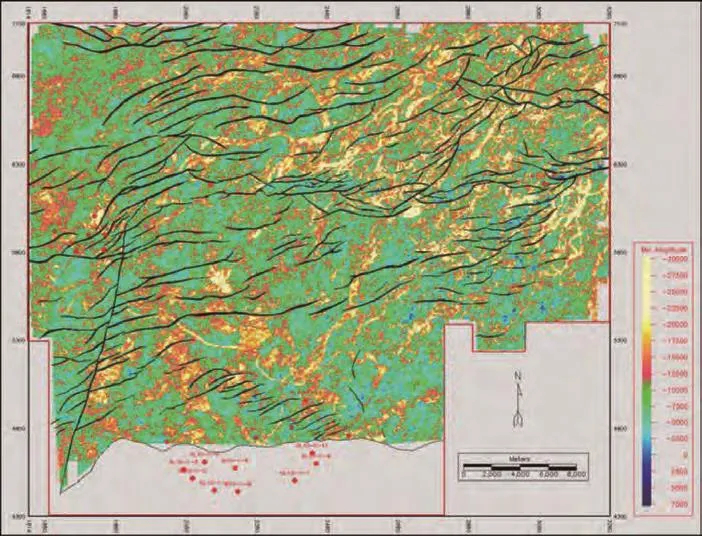
Figure 9 Planar distribution of dendritic sandbodies of the shallow water delta of the Lower Member of the Minghuazhen Formation in the northern fault terrace zone of northern Laizhouwan Low Uplift.
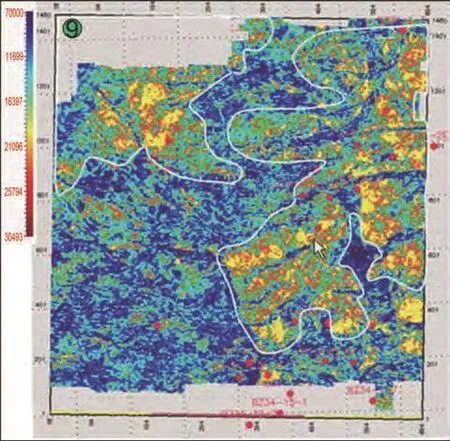
Figure 10 Planar distribution of the cuspate sandbody of the shallow water delta of the Lower Member of the Minghuazhen Formation in the Huanghekou Sag.
The above-mentioned analyses indicate that from the Laibei Low Uplift-fault terraces of the northern Upliftthe Huanghekou Sag, with change of genetic type of sandbody, planar distribution changed gradually as well.In the area of the Laizhouwan Depression-Laibei Low Uplift, stripped sandbody with low sinuosity and medium-incision was less developed. In the northern fault terraces, a great deal of stripped-cuspate sandbodies with medium-high sinuosity and frequent incision developed.And flower-shaped and cuspate sandbodies were widely developed in the Huanghekou Sag. According to the planar distribution characters of one single layer, combined with base level rising and falling, the distribution of reservoir sandbody was established. Regarding the whole trend, no obvious change occurred, which was shown more clearly in sandbody evolution of each sequence. In general, dendritic sandbody dominated in areas except the Huanghekou area. Gradually towards the inner area of the Huanghekou Sag, reservoir sandbody changed into cuspate and sheet shape.
5.2 Vertical evolution characteristics of the shal‑low water delta sandbody
Two third-order sequences in the lower Minghuazhen Formation were subdivided in order to investigate the evolution of the shallow water deltaic sandbody in the study area (Deng and Wang, 1996; Zheng et al., 2000).A shallow water delta was well-developed in the lower Minghuazhen Formation, which included 5 fourth-order sequences from bottom to top (Figure 3). The bottom boundaries of the fourth-order sequences are transgressive flooding surfaces. Below the surfaces, an assemblage of siltstone and fine-grained sandstone was developed during the falling period of fourth-order base level,while a large set of mudstone overlied the surface. The bottom boundary of PSQ5 overlapped the bottom surface of the Lower Member of the Minghuazhen Formation,which represents a regional depositional transformation surface. Overall, reservoir sandbody of the Lower Member of Minghuazhen Formation in Laibei Low Uplift was controlled by the third- and fourth-order sequence stratigraphic framework.
5.3 Control of the third‑order sequence base level on types and enrichment of reservoir sandbody
In PSQ5 of the third-order sequence, corresponding to LST, sandbody developed widely. In planar distribution,widespread fluvial or distributary channel sandbodies of shallow water deltaic plain developed. These neighbouring sandbodies incised and superimposed each other (Mei and Lin, 1991; Yao et al., 1995). With the third-order base level rising, both distributary channel sandbody of delta and the incising and superimposing degree of sandbodies reduced in PSQ3 and PSQ4 (Figure 11). Sandbody type was dominated by subaqueous distributary channel and sheet-shaped sandbody or adjacent distributary mouth bar sandbody. The association type of sandbody was interbeded sandbody or isolated channel deposits.
5.4 Control of the fourth‑order sequence base level on types and enrichment of reservoir sandbody
The third-order base level controlled sandbody vertically, and the inner fourth-order base level influenced sandbody at the same time as well. The association type of sandbody included upward-coarsening, upward-fining and compound types. Taking the PSQ4 near the Huanghekou Sag as an example (Figure 12), the content of reservoir sandbody showed the following characters in ascending order: poor development of sandbody, medium content of sandbody and sandbody-rich part. Its type changed from sheet sandbody or shallow lacustrine sandbody flat to ending channel sandbody to superimposed distributary channel sandbody.

Figure 11 3-D map superimposed sandbody within the third-order sequence stratigraphic framework in the Laibei area (Logging curves and lithology are from Well KL3-2-3).
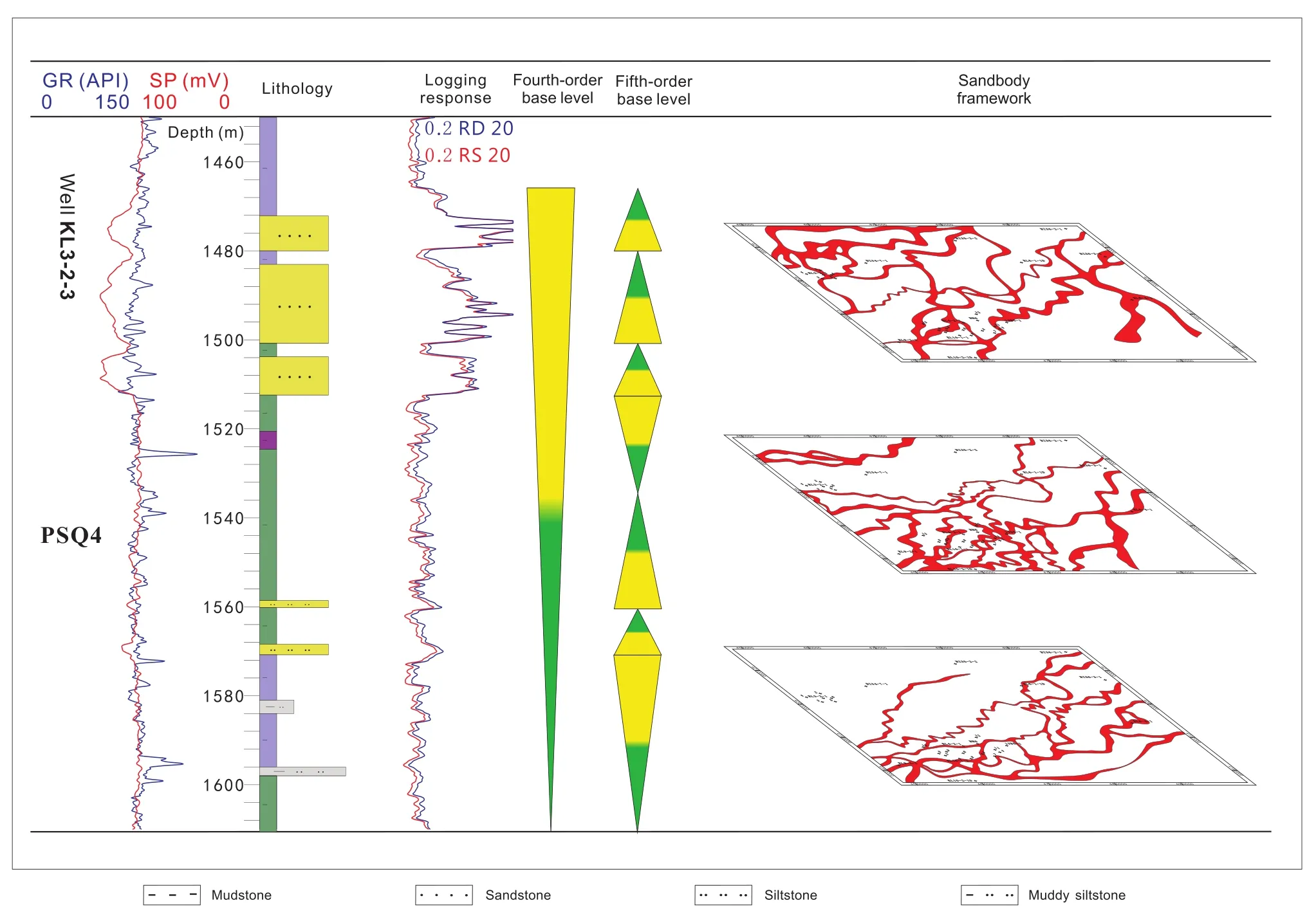
Figure 12 3-D map of superimposed sandbody within a fourth-order sequence stratigraphic framework of Well KL3-2-3.
6 Discussion: Spatio-temporal evolution model of the reservoir sandbody
According to the evolution characteristics of the reservoir sandbody, combined with analyses of sequence stratigraphy, we establish the spatio-temporal evolution model of reservoir sandbody covering an area from the Laibei Low Uplift-northern fault terraces zone-Huanghekou Sag (Figure 13).
The developing models of deltaic sandbody in the study area include four types, i. e., superimposed channel,isolated channel, unstable interbeded and weakly-rebuilt sheet sandbody. The fluvial deposit-deltaic plain deposit dominates the Laibei Low Uplift. The reservoir sandbody commonly developed at the bottom of the fourth-order sequence with a medium-high superimposed degree. Sandbody was mainly superimposed channel. In the northern fault terrace zone, an upward-coarsening fourth-order sequence developed at the bottom and an upward-fining fourth-order sequence gradually dominated. With base level rising, development of sandbody decreased and was less superimposed as well. Upward-coarsening sandbodies mainly developed on the top of the fourth-order sequence, which reflected the superimposed characteristics of deltaic progradation. From bottom to top, sandbody texture changed from superimposed channel-isolated channel-superimposed channel-unstable interbedded type.
In the Huanghekou Sag, the vertical characteristics of sandbody were similar to those of the northern fault terrace zone. In ascending order, the fourth-order sequences were characterized by upward-fining and upward-coarsening successions. The difference lies in that when rivers flowed into the Huanghekou Sag, energy gradually decreased and previously deposited sandbodies were continuously rebuilt by lake water. Based on the control of base level change, the developing models of sandbody in-cluded superimposed channel, isolated channel, unstable interbedded and weakly rebuilt sheet types.

Figure 13 Spatio-temporal evolution model of sandbody in the Laibei area.
7 Conclusions
1) The Lower Member of the Minghuazhen Formation is a complete third-order sequence with rising and falling base level. The development of the sandbody is dominantly controlled by the sequence stratigraphic framework. During the period of low- and medium-order base level variation, sandbodies developed widely. Base level change of the fourth-order sequence can be subdivided into three types, upward-coarsening, upward-fining and compound types. The channel sandbodies were overrode during the low base level period of each sequence. While with base level rising, distribution range of channel sandbodies were gradually reduced.
2) We establish four development models of sandbodies during their spatio-temporal evolution, respectively as superimposed channel, isolated channel, unstable interbedded and weakly-rebuilt sheet types. Among them,superimposed channel and isolated channel were primarily controlled by base level change within different order sequences. In plan view, from the Laibei Low Uplift to the Huanghekou Sag, river energy decreased gradually. Sandbody texture was dominated by unstable interbedded and sheet shape, and planar distribution of sandbody changed from dendritic to cuspate shape.
Acknowledgements
We would like to thank the National Science and Technology Major Project (Exploration Technologies for Offshore Hidden Oil/Gas) (Project No.: 2011ZX05023-002-05) for financial support. Special thanks are also given to the reviewers whose comments improved the original manuscript.
 Journal of Palaeogeography2014年3期
Journal of Palaeogeography2014年3期
- Journal of Palaeogeography的其它文章
- Siliciclastic-carbonate mixing modes in the river-mouth bar palaeogeography of the Upper Cretaceous Garudamangalam Sandstone (Ariyalur, India)
- Palaeogeography, palaeohydraulics and palaeoclimate of the Mio-Pliocene Siwalik Group, eastern India
- Clay minerals in the Pliocene-Quaternary sediments of the southern Yangtze coast, China: Sediment sources and palaeoclimate implications
- Coevality of the sea-level fall and main mass extinction in the Permian-Triassic transition in Xiushui, Jiangxi Province, southern China
- Late Miocene wood flora associated with the Yuanmou hominoid fauna from Yunnan, southwestern China and its palaeoenvironmental implication
